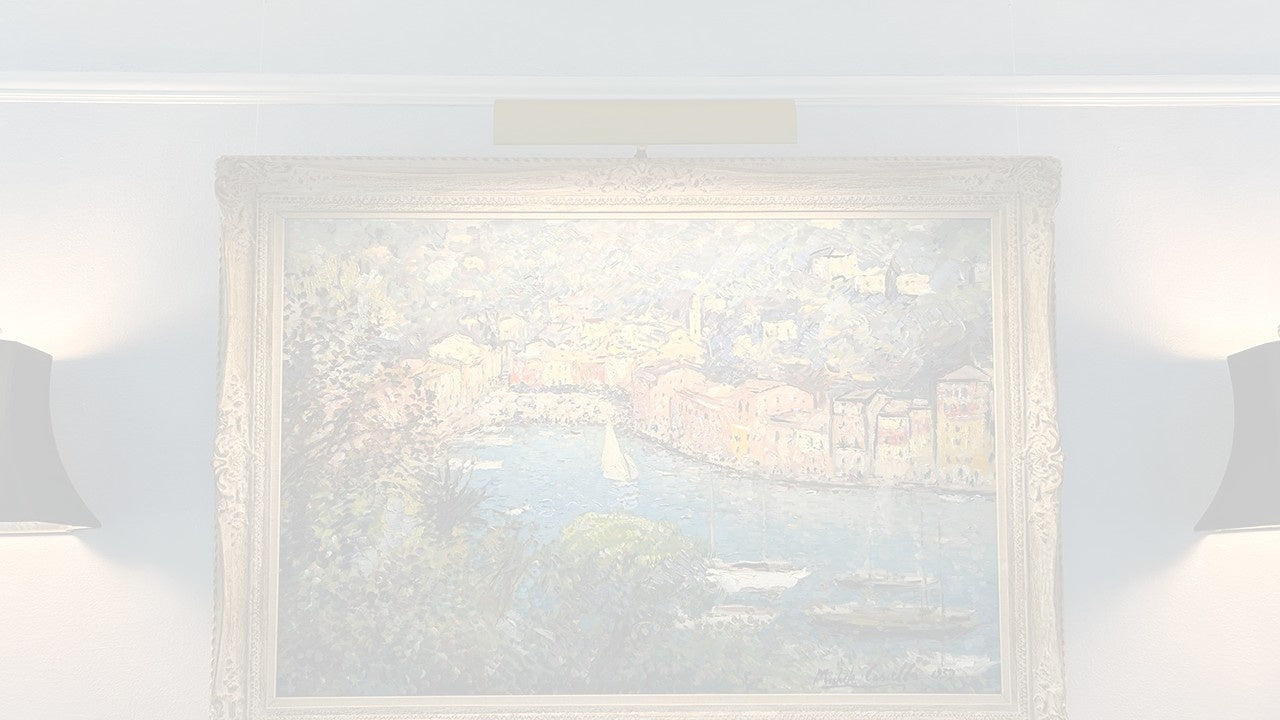In picture hanging, we can all more or less agree on the best places to hang pictures—our living room walls, in museums and galleries, our workspaces, hotel lobbies, basically anywhere with ample space to appreciate the art. And within these spaces, some areas show good picture hanging potential, but not without risk to the pictures.

You might hone in on these areas because of how beautifully some artwork can transform them, or you might simply have too much art in your collection and not as much wall space to showcase them. In this article, we’ll talk about what makes these unconventional spots so risky and what it takes to safely display your pictures despite that risk. Yes, it’s possible!
Are you ready? Then let’s get right into it.
High-Risk Picture Hanging: What You Need to Know First
Risky picture hanging areas are locations in the home or in any room that pose a risk of damage to artwork due to less-than-optimal conditions, commonly heightened humidity, high heat, and disruptive vibrations. Even more protection than usual is needed for artwork in areas prone to these conditions, like:
Images courtesy of Kelly Marshall, Lula Poggi, Francesco Lagnese, Boz Gagovski
Bathrooms
Fireplace mantels
Basements
Doorways
Kitchens
Closet interiors
Wall space under staircases
Areas exposed to direct sunlight
Humid places like the bathroom, kitchen, and basement are generally a no-go for sensitive decor like art. Even when they’re well-ventilated, the nature and function of these rooms, which involve activities such as cooking, cleaning, and running hot water, regularly enable steam and moisture to be trapped under a frame.
Similarly, the mantelpiece and window-adjoining walls subject art and decor to high temperatures and UV damage. They are gorgeous spaces for decor, and we know how beautiful art looks when awash in natural light, but the sun discolors and degrades art faster than you can say 'picture hanger.' As for hanging areas under staircases, doorways, and closets, these are vibration zones easily disturbed by thundering footsteps and door slams, not to mention they tend to be peripheral spots lighting-wise, making them easy to miss.
But don’t be discouraged. Now that we are aware of each risk associated with hanging pictures in these areas, we can target each one with protective measures and specialized hardware, from how to hang picture frames in humid bathrooms to setting up a secure wall mounting for art in high‑traffic hallway nooks. We’ll dive into these tips and measures in the next section.
A Guide to Picture Hanging in Risky Places
So now you’ve chosen one of these risky spots to hang wall decor, including and especially pictures, maybe even your favorites. Trust us, we understand wanting to risk it all for the sake of displaying our beloved pictures. But we’re here to tell you there’s no need to go that far!
Here are our professional tips for how to hang pictures safely in not-so-ideal decorative spaces.
Avoid putting your most treasured pieces in the line of fire.
So to speak! Let’s bring our attention first to the pictures themselves. Now, we understand many of us might be resorting to hanging art in the bathroom or under the stairs simply because we’ve run out of decor real estate. This is a safe space, so no judgment here. However, there’s no avoiding the fact that the kitchen or basement is generally not art-friendly. The first and safest way to deal with that is by allocating artwork that you would miss the least should they get damaged.

This goes for anything from art prints to personal photographs. Source budget artwork or pick out mementos you have a temporary or less of an attachment to. If your risky-spot curation is still more valuable than these, opt to make copies of them first and mount those duplicates in their place.
Make your pictures resistant to damage.
Just because you won’t run to save them first in case there’s a fire, doesn’t mean these pictures shouldn’t be given every defense you can afford them, right? The next step is to power up your pictures, essentially. First, consider adding matting. Matting prevents artwork inside a frame from making contact with the frame’s glass or acrylic cover. This way, any moisture that may form on the cover won’t immediately affect the picture.
Then, make sure you choose metal frames for your pictures. Unlike wooden frames, mold does not vibe with metal, and metal picture frames are not as sensitive either—no matter how much your shower or bath steams up the bathroom, or how hot it gets in the kitchen during the summer, it’ll take much more for a metal frame to bend or bow. There are even metal picture frames with wood-like coating, if you prefer the warm wood aesthetic.
See our in-depth guide to art hanging in the bathroom:

Use protective hardware.
You can protect your pictures in the very way you hang them. Remember how we said that even a well-ventilated bathroom or kitchen can still be humidity hotspots because of what they’re used for? This can be combated if you ensure proper ventilation not only in the room, but also for each picture. How can you do this? Attach a picture bumper to every corner of every picture to widen its gap from the wall and give it more space to breathe.

Use the appropriate heavy-duty hardware for hanging large frames. And rather than your standard nails and hangers, opt for tremor hooks for your under-the-staircase, doorway, and closet art. They’re just like your standard picture hooks, but with wire snaps that hold wire from slipping off easily—perfect for hanging art near slamming doors, in cramped nooks and closets, and on the wall space just under the stairs. For items that do not use wire, look to security hardware brackets as an additional safety measure.
Light ‘em up.
The basement, under the stairs, inside the closet, and every other decorative space we’ve talked about are not only risky, they’re also awkward picture hanging places, some more so than others. Because these spaces don’t always come to mind first and they can be easy to ignore, if you decide to spruce them up with pictures, we also recommend installing some lighting around your display (unless it’s a spot that gets direct sunlight, like a sunroom). It can be something simple like spare string lights or a floor lamp. In a closet, try going for a setup above your dresser, where you might keep a small desk lamp. This will make your unexpected decor more visible and prevent any mishaps around it due to poor lighting.

Take care of slippery slopes.

Now, what if you want to hang a picture directly underneath the stairs, right on that incline? Or what if you’re dealing with a sloped wall in the basement? You can completely avoid a display that slips off or keeps tilting to the side by mounting it on bullet hangers. A bullet hanger is basically a standalone gallery system and its swiveling mechanism means you can safely hang a picture from angled surfaces without having to assemble a makeshift hook-and-wire arrangement that you can’t be fully confident won’t come crashing down at any moment.
Final thoughts
In kitchens, bathrooms, basements, on a mantelpiece, and in peripheral places such as under the stairs, picture hanging can easily lead to jeopardized artwork—if you leave your pictures unprotected. But knowing the risk, from constantly high humidity levels to constant vibrations, already sets you on the route to a safe and unique picture hanging experience. These tips will guide you through so you’ll come out with a space yet more beautiful, a picture collection more easily admired and preserved, and a picture hanging prowess just as enviable.
We’d love to hear about your experience hanging art in these risky areas, whether in the past or just after reading this article. Let us know in the comments. Happy hanging!









Leave a comment (all fields required)